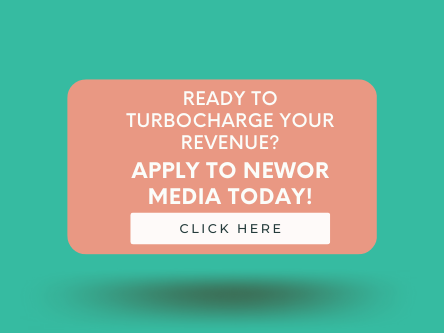
While there are plenty of ways to monetize your website, we’ve put together a list of the seven most common monetization methods that are trending — and generating significant revenue for bloggers and publishers.
1. Build and Flip Websites
Building and launching a website is a fairly low-cost venture if you have the time and skills. You’ll need to spend money on buying a domain name, hosting a site, and any themes you want to use. Many people have taken free online courses to learn how to build sites and used low-cost platforms like WordPress to build different types of websites, including:
- Blogs
- Informational sites
- Educational sites
- Entertainment sites
- Niche sites
- eCommerce platforms
Once sites are up and running, they can start generating revenue. As you drive more traffic to the site, you can earn more money and make it attractive to sell. Some self-made websites have sold for tens of thousands of dollars. Established sites have sold for millions of dollars.
Find this concept interesting? Take a look at our guide on How to Make Money Building Websites.
2. Sell Ad Space to Advertisers
The most common (and easiest) way to monetize your digital products is to sell ad space. High-quality websites attract a lot of visitors, and that traffic is valuable to advertisers trying to sell their products or services.
There are multiple types of ad formats you can sell, including:
- Display ads
- Interstitial ads
- Playable ads
- Native ads
- Video ads
- Banner ads
- Pop-up ads
Most ads come in multiple shapes and sizes to fit your format. You can sell ad space directly to advertisers, use programmatic ad networks to generate passive revenue or both.
Direct Selling
Selling ads on your own can earn publishers more money because you avoid middle-man fees. You can set your own pricing and offer discounts to loyal advertisers. However, direct selling is also the most expensive way to sell ads since you’re paying for sales teams that have to build relationships with advertisers, provide collateral material, negotiate rates, and follow up on payments.
Ad Networks
Ad networks instantly connect publishers with hundreds or even thousands of advertisers. For example, an ad network like Newor Media works with premium advertisers to match them up with available inventory provided by publishers. Advertisers bid on ad space on your website. By adding a snippet of code, the highest bidding ads relevant to your visitors are shown without manual processing. Add the code, then adtech does the rest, including sending you a check based on the bids and the traffic you provide. Options for ad payments are usually based on PPC or CPM models.
3. Utilize Affiliate Marketing Links
Another way to monetize your website is by using affiliate marketing links. You can think of affiliate marketing as a referral fee. You advertise products on your website through ads, reviews, mentions, or links. When consumers click on an ad or link, it generates a code that lets the advertiser know you sent them the traffic. If the consumer makes a purchase, the affiliate program pays publishers a percentage of the sale price for the referral.
Affiliate networks can be used for physical products, webinars, online services, offline services, eCommerce, and more. Such partnerships can be lucrative, but if it doesn’t feel like a natural fit for website visitors, it can degrade their impression of the quality of your site.
There are pros and cons to affiliate marketing. Before you make a decision, you should compare the value of display advertising vs. affiliate marketing.
4. Sell Digital Products to Consumers
You can also monetize your websites by selling your own products on your website or through an online store. You can offer products that complement your site’s content or sell premium content.
The easiest products to sell are digital since you don’t have to worry about physical inventory, warehousing, and shipping.
Digital products have low overhead since there are no shipping or holding costs. They also tend to have high-profit margins. Once you create a digital product, there are no recurring costs. Each item you sell increases your ROI. You also have total flexibility in the digital products you sell. For example, you might:
- Sell paid subscriptions
- License your content for use
- Sell webinars or eLearning course
- White-label digital products from third-parties
In most cases, you can automate the process, so once you set it up, it runs automatically and generates passive revenue. However, selling digital products requires you to have digital assets that consumers want and have enough value that site visitors are willing to pay for them.
You can also sell print-on-demand or physical products using third-party providers or dropshippers that do not require you to handle merchandise yourself.
5. Create a Membership Site
Membership websites have become popular, whether your entire website requires a membership to join or whether you offer exclusive access to certain content or perks. Many sites offer premium content like online courses, webinars, tutorials, exclusive downloads, and access to digital products. You may also offer access to experts or consulting or provide a service that’s only available to members.
Done right, you can generate revenue and build a loyal community that is deeply attached to your brand and content.
Some sites use a platform like Patreon to offer monthly memberships. You can offer exclusive content, access to your archives or content, or just provide a way for supporters to offer a monthly stipend to help you continue your mission.
Each of these options provides monthly recurring revenue (MRR). Once you establish a membership site, it provides MRR that you can bank on, making it easier to forecast revenue and budget future cash flow. For sites that offer online services, such as Software as a Service (SaaS) products, MRR is one of the biggest indicators of growth.
6. Use a Paywall for Premium Content
Another way publishers are monetizing their sites is to add paywalls for access.
There are different types of paywalls, including:
- Hard paywalls
- Soft paywalls
- Ad-free paywalls
- Premium content paywalls
Hard Paywalls
Some websites have had success with using what’s known as a hard paywall, only displaying the title and a few sentences of an article to entice readers. Before they can read the rest of the content, however, they encounter a message letting them know they need to signup for a membership or subscription to continue.
Soft Paywalls
Soft paywalls let readers access a certain number of website pages. Once they hit their limit, visitors are required to pay before continuing to view content. The New York Times is an example of a soft paywall, or what’s known as a metered site.
Ad-Free Paywalls
Some sites offer visitors the option of an ad-free viewing experience if they sign up for a monthly fee.
Premium Content Paywalls
One of the more popular approaches for publishers is allowing free access to most content while keeping premium content behind a paywall. For example, a site might offer exclusive access, more in-depth content, or additional content. Statista, for example, aggregates research and statistics across industries and makes basic charts and graphs available for free while requiring users to sign up for premium content, such as full research reports and deep industry insights.
7. Publish Sponsored Posts
Sponsored posts come in various types and are called by different names. You may hear them referred to as:
- Sponsored posts
- Paid guest posts
- Native advertising
- Native content
- Content Partnerships
- Advertorial
There are differences, however. Native advertising or native content is content created by the company that is trying to advertise its product or service. It typically matches the look and feel of other content on the website and provides value while also subtly highlighting their products or services.
Sponsored content is content that is created by the publishers and attaches a brand to the content for exposure. For example, an email list newsletter that is brought to you by an advertiser. Such content may or may not include ads to accompany the sponsorship.
You can generate additional revenue by developing or publishing content prepared by your partners. The most popular type of sponsored posts fit seamlessly within the content and provide value to the reader.
Well effective, publishers must be careful about blurring the links between editorial content and advertising. If readers feel like you’re trying to hide the fact that content is sponsored, it can reduce trust in your website. Some specific rules and regulations need to be followed for native ads and sponsored content put in place by the Federal Trade Commission.
Conclusion
Building a brand and driving traffic to your website is hard work. It takes a solid strategy, the know-how to build an audience, and careful attention to the metrics.
Once you’ve built a quality website that attracts visitors, you can monetize your website. You can generate a passive revenue source by making ad space available and utilizing ad networks. You can also take advantage of affiliate links, sponsored posts, paywalls, and memberships or sell digital products directly to consumers.
Each type of revenue method has pros and cons, so you should learn more about making money from website ads and digital products before jumping in. If you would like to discuss monetization strategies and how we can generate more revenue from your website, talk to the digital advertising network experts at Newor Media today.

